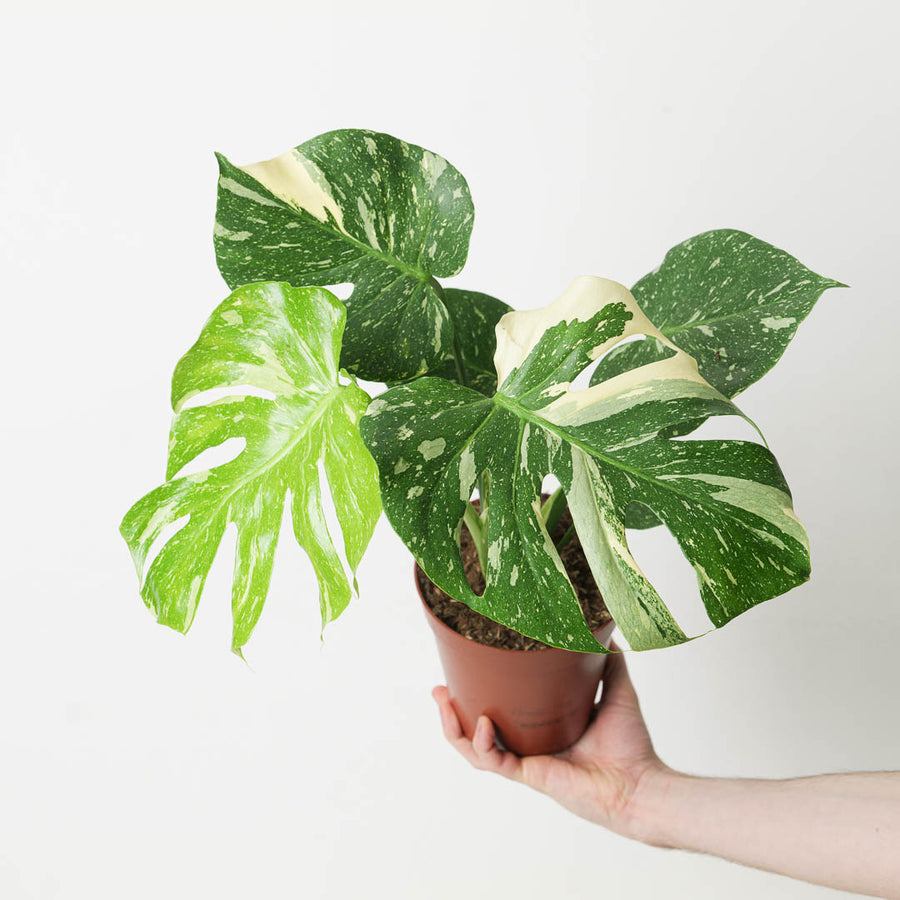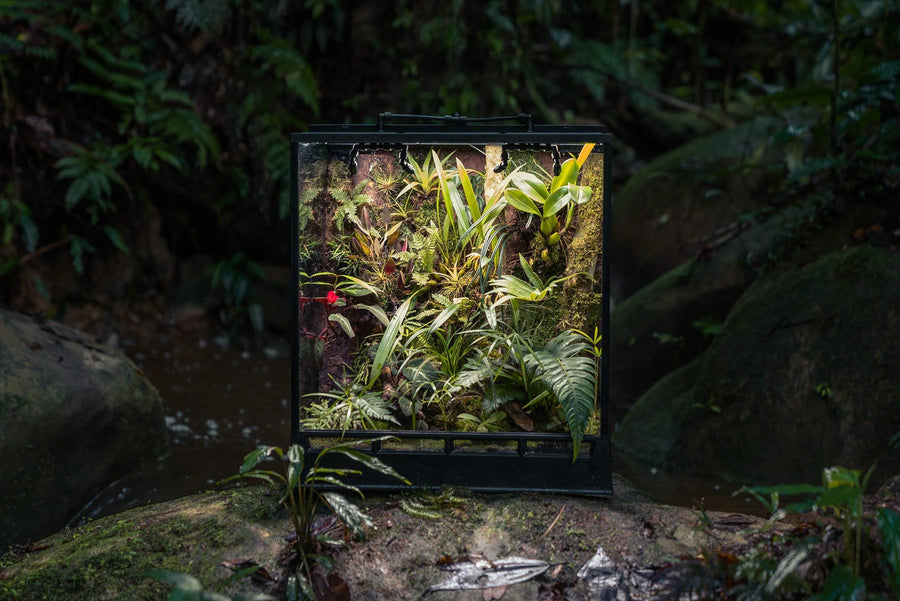Marcgravia sp. 'Narrow Leaves' is a compact, tropical vine that features thin, elongated leaves, making it distinct from other Marcgravia species. This plant is perfect for terrariums due to its preference for high humidity and its shingling growth habit, where the leaves form a tight, overlapping pattern as they climb. The leaves are typically dark green, and the plant thrives in environments with consistent moisture and bright, indirect light. It is an epiphytic species, meaning it can grow both in soil or attached to surfaces like bark or moss.
This species requires high humidity levels of at least 70%, making it ideal for terrarium cultivation. Its small size and slow growth mean that it can stay manageable even in small enclosures. It also needs to be planted in well-draining substrates like sphagnum moss or orchid bark to prevent waterlogging while maintaining enough moisture to support its growth.
Native to
Marcgravia 'Narrow Leaves' originates from the rainforests of Central and South America, where it thrives in the humid forest understory, clinging to tree trunks or other structures.
Water
Keep the substrate consistently moist but avoid waterlogging, as this can lead to root rot. Using a substrate that retains moisture without becoming soggy, such as sphagnum moss or a high-quality orchid mix, is ideal. Mist regularly to maintain the humidity levels the plant requires.
Light
Bright, indirect light is essential for this species. Too much direct sunlight can cause leaf burn, while insufficient light may slow its growth. It thrives under diffused light, such as near a north- or east-facing window or in a well-lit terrarium.
Humidity
Humidity levels of 70% or more are necessary for this plant to thrive. If growing outside a terrarium, consider using a humidifier or misting regularly. In enclosed environments like terrariums, the natural humidity should suffice.
Temperature
Marcgravia sp. 'Narrow Leaves' prefers warm indoor temperatures between 18°C and 26°C. Avoid exposure to cold drafts or temperatures below 15°C, as this can harm the plant.
This plant is ideal for terrarium setups, providing both aesthetic appeal and easy care in the right environment.









